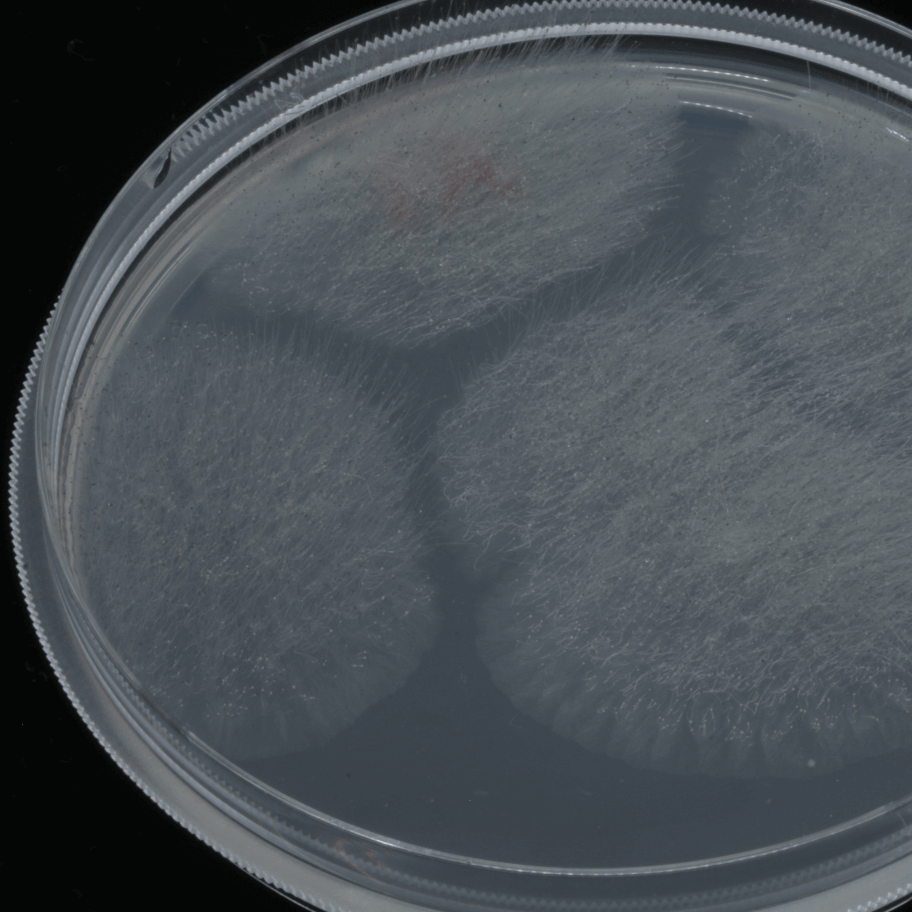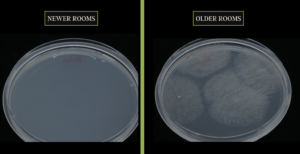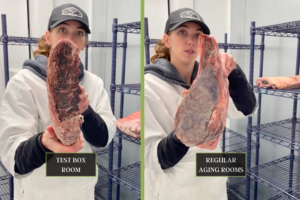

No matter where or how you dry age, the process will involve the loss of moisture from within the meat. The total amount of moisture loss will play a huge role in flavor development of the end product. But what about mold? Some dry aging facilities have mold present on the beef during the aging process, whereas others do not. So what’s the deal with mold?
In a nutshell, it’s important to ensure that you have proper controls in your dry aging facility to prevent any food safety concerns, but when done properly and safely, different molds will impart different flavor. Think of how the veins of blue within blue cheese gives it a unique flavor.
The last year or so I’ve become obsessed with understanding what role our specific mold plays in the dry-aging process. I reached out to some contacts in academia just to pick their brains, see what they think of it and how to get a better understanding of what goes on in our rooms here, in our coolers. My main question was, “Is there a way for me to try and isolate the mold that we’re growing here?” I did get one response – “Yeah, you can go out and you just need an incubator and some petri dishes and trial and error.”
With this in mind, what I wanted to try to prove is that we had different microbial loads in each of our aging rooms. The older room was more in fact, better environments, for dry aging, simply because they’d been in existence for so long. What I did was place a petri dish in each of our six aging rooms, in the same location in each room for the same period of time. Then I threw them in the incubator for a month to see what happened.
Thirty days later, I took a look at my petri dishes to see what happened. The four younger aging rooms, the ones that were most recently constructed, there was nothing going on in those petri dishes, but our two oldest rooms had incredibly district and visible spore growth. What’s my takeaway from this? A fun experiment, to be sure. It was really amazing for me to know, have definitive proof, that, yeah, there are different microbial loads in separate aging environments, even within the same building.

A natural follow-up on my petri dish experiment and the concept of mold in dry aging beef is a question that I field a lot – “What is the proper way to dry age?” Or, “What is the right way to dry age meat?” And I actually don’t like that question because I think what you should be asking is, “What is the safe way to dry age?” Because there are, in fact, definitive answers that tell you how you SAFELY dry age beef. When it comes to quality, though, that’s more of a personal preference. Your different aging environments are going to impart different flavors to the end product. So going back to mold, our aging environment here has a high microbial load in the rooms. That’s why we will get more mold growth on our product. And this imparts a specific flavor profile that you don’t get in environments where you don’t see any microbial growth. Comparing a subprimal dry aged in my test cooler, with zero microbial load, you can visually see there’s really nothing growing on the meat, no mold. Does that mean that this one is better than that? Personally, I like the flavor of this one, so I would say yes. But there could be somebody out there that prefers this one. So at the end of the day, proper? So it’s kind of like what you are looking for.

Another thing to keep in mind… Mold doesn’t happen overnight. So if I go out and I build a brand new dry aging facility and I stock it with the same product that we’re using here, I’m not going to get our usual results. It takes a really long time to cultivate the specific microbial communities that we have growing in our aging room right here. That’s why I think a lot of people who are relatively new to the dry aging scene, they’ll build a dry aging cooler, get some product in there and end up with something that is absolutey dry aged, but it’s only dry; no microbial growth on the exterior.
Interestingly enough, the mold that we have in our facility here is of the same genus that is used in the production of a cheese, Tomme de Savoie, so anybody that really likes cheese, if you like that guy, you will love our beef!
